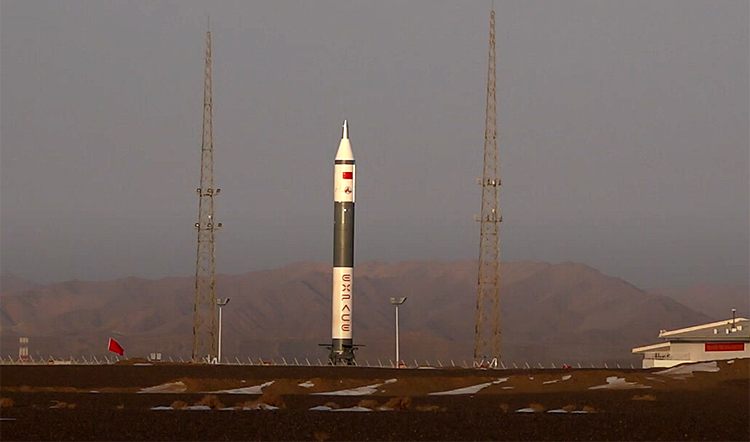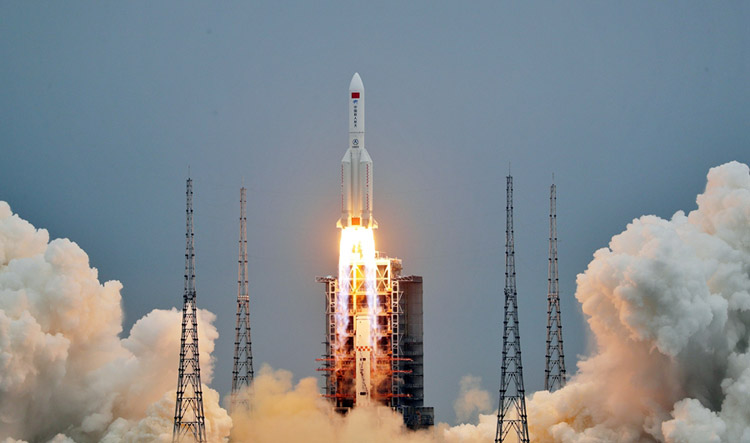INDIAN ARMED FORCES CHIEFS ON OUR RELENTLESS AND FOCUSED PUBLISHING EFFORTS

The insightful articles, inspiring narrations and analytical perspectives presented by the Editorial Team, establish an alluring connect with the reader. My compliments and best wishes to SP Guide Publications.

"Over the past 60 years, the growth of SP Guide Publications has mirrored the rising stature of Indian Navy. Its well-researched and informative magazines on Defence and Aerospace sector have served to shape an educated opinion of our military personnel, policy makers and the public alike. I wish SP's Publication team continued success, fair winds and following seas in all future endeavour!"

Since, its inception in 1964, SP Guide Publications has consistently demonstrated commitment to high-quality journalism in the aerospace and defence sectors, earning a well-deserved reputation as Asia's largest media house in this domain. I wish SP Guide Publications continued success in its pursuit of excellence.
- Operation Sindoor: Resolute yet Restrained
- India’s Operation Sindoor Sends a Clear Message to Terror and the World – ‘ZERO TOLERANCE’
- Japan and India set forth a defence cooperation consultancy framework, talks on tank and jet engines
- Terrorist Attack in Pahalgam in Kashmir: Unfolding a long surgical war against PAK
- Lt General Pratik Sharma takes over Command of Indian Army's Northern Command
China's VLEO Satellites
China's plan to establish a constellation of 300 VLEO satellites needs to be viewed in the backdrop of its expansionist plans, aggressive moves, augmenting existing 24x7 satellite coverage of border areas and establishment of an Information Support Force (ISF)
 |
The Author is Former Director General of Information Systems and A Special Forces Veteran, Indian Army |

On May 21, 2024, China successfully launched four satellites aboard the Kuaizhou-11 rocket operated by the China Aerospace Science and Industry Corporation (CASIC), a subsidiary of Expace, to test new technologies. These four satellites included 'Wuhan-1', a remote sensing satellite developed by Wuhan University, and 'Chutian-001', a very low Earth orbit (VLEO) integrated remote sensing technology verification satellite. The other two satellites were 'Tianyan-22', an atmospheric detection satellite, and 'Lingque-3', a remote sensing satellite for the firm ZeroG Lab.
Launch of the Kuaizhou-11 rocket on May 21, 2024 was the third launch by CASIC. The first launch, in July 2020, failed but the second launch in 2022 was a successful flight. China has planned around 100 launches in 2024. The majority will be Long March rocket launches. The May 21 flight was China's 24th orbital mission in 2024.
On May 21, 2024, China successfully launched four satellites aboard the Kuaizhou-11 rocket operated by the China Aerospace Science and Industry Corporation (CASIC), to test new technologies
Very Low Earth Orbit (VLEO) is defined as the region of space located approximately 100-450km above the Earth's surface. Satellites operating in this region come with a set of unique advantages and challenges.In contrast, Low Earth Orbit (LEO) starts around 300 or 400 km and extends up to 2,000 km. Medium Earth Orbit (MEO) extends from 2,000 km to just below the geostationary belt at around 35,786 km. VLEO satellites can provide significant benefits over higher altitudes. Other than higher resolution and low costs, orbital debris collision risk and radiation damage are also reduced. In addition, the capability of the launch vehicle is increased and end-of-life de-orbit is easier.
Significantly, China plans a constellation of 300 VLEOs. VLEO satellites, which circle Earth at an altitude of 93 miles to 186 miles (150 to 300 km), promise advantages such as reduced signal travel time, stronger signal strength, lower power needs and reduced launch costs. These satellites, however, encounter greater atmospheric drag, requiring frequent use of onboard propulsion. Besides, they have a shorter lifespan and need frequent replacement.
China plans a constellation of 300 Very Low Earth Orbit (VLEO) satellites, which promise advantages such as reduced signal travel time, stronger signal strength, lower power needs, and reduced launch costs
Some 5,000 LEO satellites are currently in orbit 500 to 1,500 km above the Earth, helping to forecast the weather, transmit data, and provide broadband Internet to underserved areas.LEO satellites, orbital periods are of the order of 90 minutes, which implies that these satellites will only be visible from 5 to 20 minutes per orbit depending on the altitude.

Elon Musk's StarLink network is the world's first and largest satellite constellation using a low Earth orbit to deliver broadband internet capable of supporting streaming, online gaming, video calls and more. StarLink satellites currently sit approximately 550km above the surface in LEO. However, earlier this year, StarLink sought permission from the Federal Communications Commission (FCC) to allow it to launch VLEO satellites between 340 and 360km above the surface of the Earth.
The newly formed Information Support Force (ISF) reports directly under China's Central Military Commission (CMC) and will be responsible for handling network information systems, communications support, and network defence
China's plan to establish a constellation of 300 VLEO satellites needs to be viewed in the backdrop of its expansionist plans, aggressive moves, augmenting existing 24x7 satellite coverage of border areas and establishment of an Information Support Force (ISF), by breaking up its Strategic Support Force (SSF) which had been established in 2015 as part of modernisation of the Peoples' Liberation Army (PLA) after Xi Jinping first assumed the presidency of China in March 2013. PLA considers the information domain as important as the four traditional domains of air, land, sea and space.
China's ISF is to play a crucial role in advancing the Chinese military's high-quality development and competitiveness in modern warfare; powered by AI in networks, the ISF would ensure secure and more efficient coordination. Its role is crucial in future conflict situations where multiple domains will be contested vigorously. The ISF underpins coordinated development and application of network information systems". This indicates, the ISF will be responsible for handling network information systems, communications support and network defence; PLA's command and control, information security, and intelligence dissemination (integrated computer architecture, including network information systems and communications support), as well as coordinating defence, maintenance and repairs of their own cyber networks.
The development of information support capabilities has been a key goal for the PLA, in line with Xi's ambition of building an 'informationised' military as a stepping stone to building an 'intelligentised military'
China's 2019 white paper titled 'China's National Defense in the New Era' had stated that PLA would evolve from "informationised" to "intelligentised" warfare through such technologies as artificial intelligence, quantum information, big data, cloud computing and the Internet of Things (IoT). The development of information support capabilities has been a key goal for the PLA, in line with Xi's ambition of building an 'informationised' military as a stepping stone to building an 'intelligentised military'. The ISF is likely to be based around the SSF's former Information and Communication Base originally established in 2010 as the Information Assurance Base that has been regularly involved in exercising and managing the PLA's information network infrastructure, later transferred to the SSF in 2015.
The newly formed ISF reports directly under China's Central Military Commission (CMC). The requirement for the ISF to build and operationalise joint information-support capabilities suggests that this continues to be a work in progress. The constellation of 300 VLEO satellites would be an important asset for the ISF, as well as the Cyberspace Forceand the Aerospace Force.





